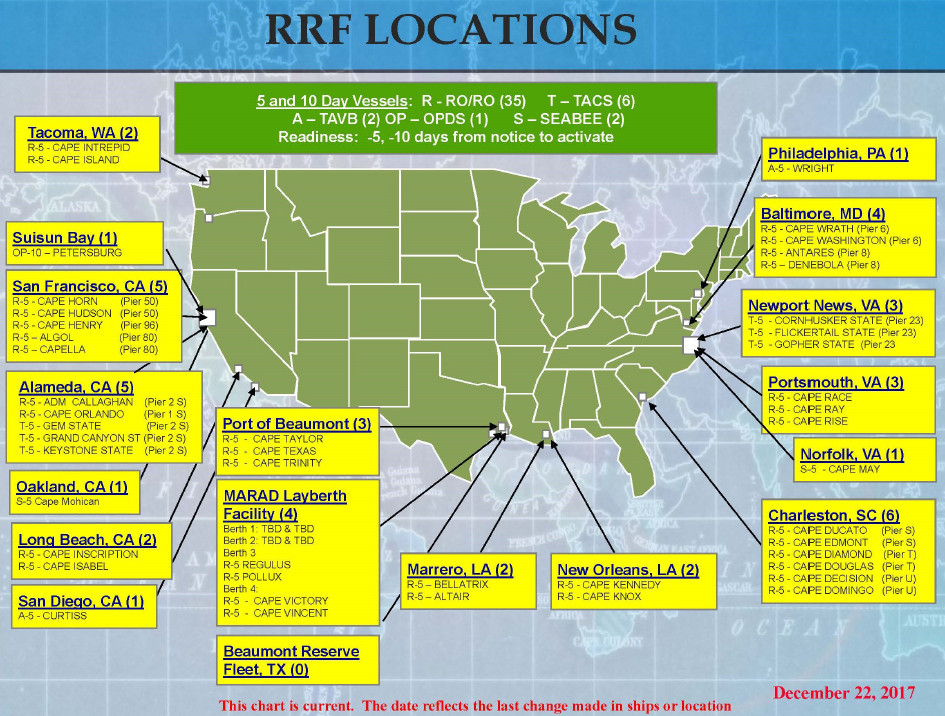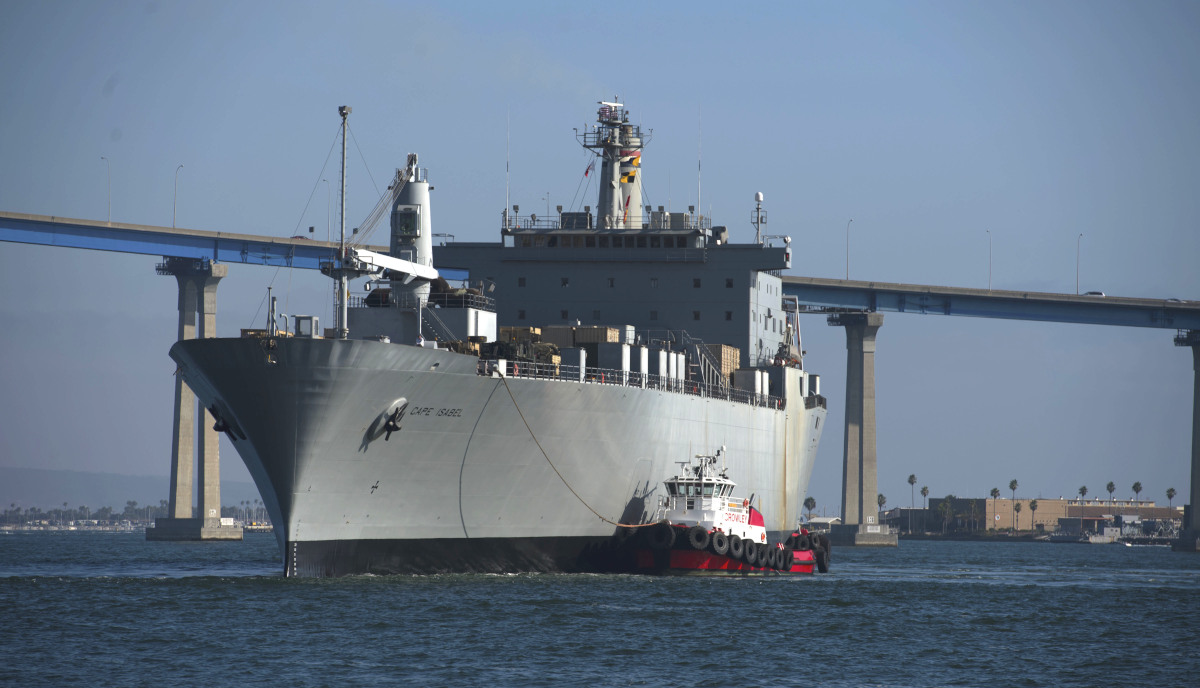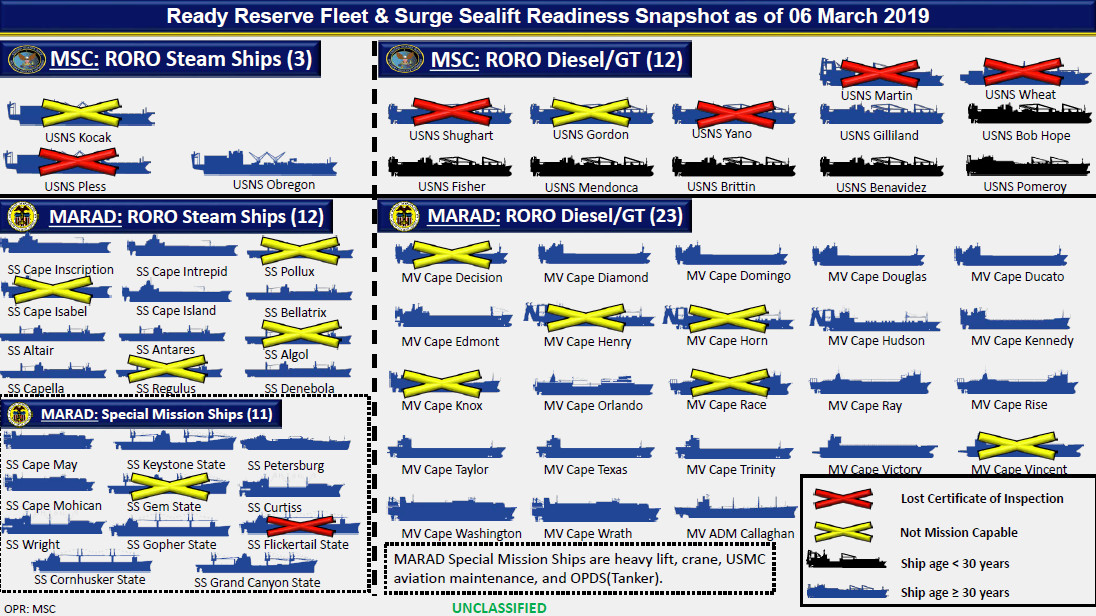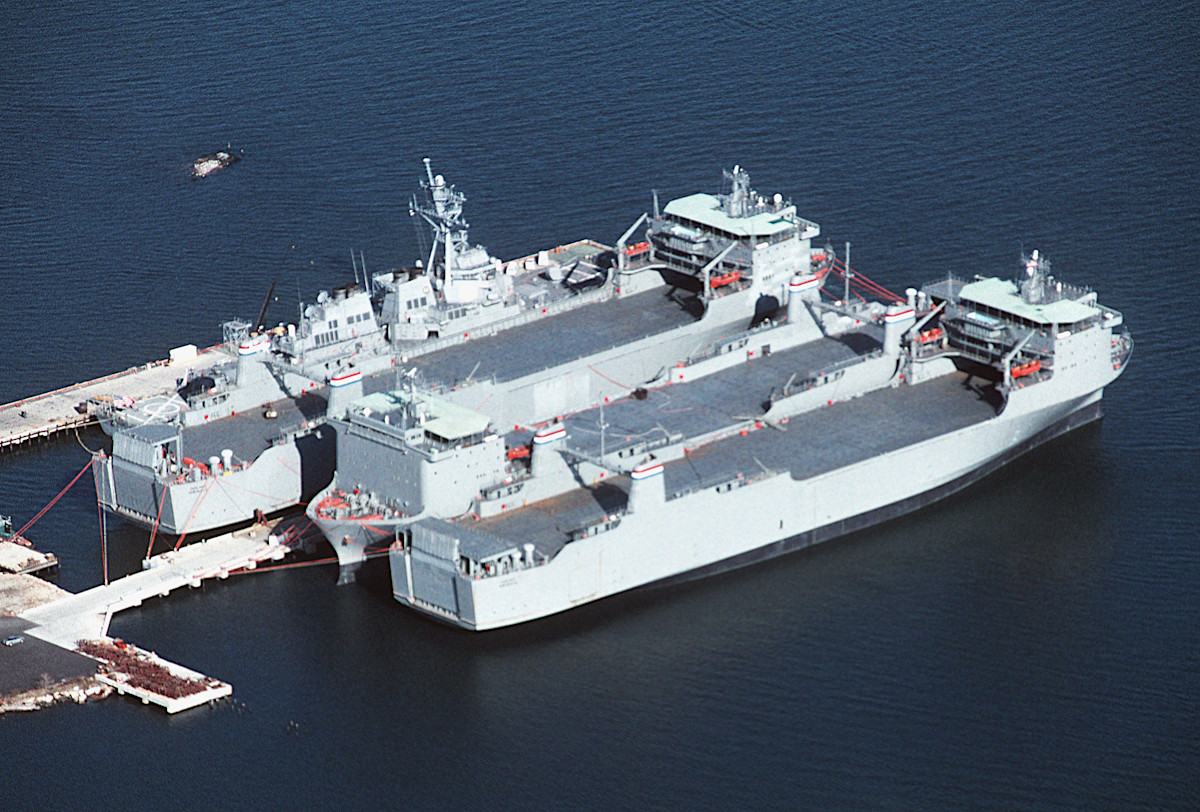U.S. Transportation Command, in cooperation with the U.S. Navy’s Military Sealift Command and the Department of Transportation’s Maritime Administration, kicked off a massive snap sealift exercise yesterday across the United States. It involves an unprecedented 28 ships from the Ready Reserve Force, a fleet of support ships with merchant marine crews that would be vital during any large scale conflict, but which has experienced serious readiness problems in recent years leading to concerns that they would be unable to support a sustained conflict abroad.
The exercise, aptly nicknamed Turbo Activation, began on Sept. 16, 2019, and involves crews from the Ready Reserve Force getting no-notice orders to “activate” their ships and get them ready for operations. The general goal of these exercises, four of which generally occur every fiscal year, is to validate the readiness of the vessels involved and test the ability of merchant mariners to get them operational within an assigned timeframe. How long a crew has to prepare varies from ship to ship and can be anywhere from four to 20 days.
“The activated ships are directed to transition from a reduced operating status to a fully crewed status, with the quarters made habitable and cargo gear ready, within five days,” according to a press release from U.S. Transportation Command (TRANSCOM). “Activations are commonly followed immediately by a sea trial.”
The release does not say what ships have gotten activation orders, but does say that they are the Maritime Administration’s (MARAD) Ready Reserve Force, as well as from Military Sealift Command’s (MSC) “surge” fleet. These are spread around ports on the East and West Coasts of the United States, as well as ones on the Gulf of Mexico.

As of March 2019, the surge fleet included 15 roll-on/roll-off (RORO) cargo ships, while the Ready Reserve Force had 46 more ships. MARAD’s contingent 35 more RORO vessels and 11 “special mission ships,” which include tankers and ships with specialized capabilities, such as heavy lift cranes and aviation maintenance shops. One of the special mission ships, the M/V Cape Ray, notably carried elaborate equipment to support the destruction of Syrian chemical weapons in 2014.
Merchant marines serve aboard both MSC and MARAD ships, but the crews of the former also include military personnel. When ships from MARAD’s Ready Reserve Force activate, they come under the direct operational control of MSC. Another approximately 60 U.S.-flagged commercial ships are part of the U.S. government’s Maritime Security Program and could get pressed into service during a crisis, but are not part of the standing reserve fleets.
During any major contingency, these vessels would provide absolutely vital logistics capabilities, especially it there was a need to move large contingents of ground forces into a theater during the early phases of a particular operation. During sustained operations, these ships would become a critical link in the logistics chain.

So, it makes good sense to ensure that reserve fleets are ready and able to respond, if necessary. However, Turbo Activations, which first began in 1994, are typically relatively small affairs, often involving between three and five ships in total.
“These exercises typically involve only a few ships, but this event targets 28 vessels for activation to provide a better assessment of the readiness of U.S. sealift forces than can be accomplished with fewer activations,” U.S. Transportation Command’s statement said. “This scale will also stress the underlying support network involved in maintaining, manning and operating the nation’s ready sealift forces.”
This stress testing is particularly important at present given very serious concerns about the readiness of these ships, which emerged in detail earlier this year. As of March 2019, of the combined 61 ships in MSC and MARAD’s reserve fleets, 13 of them, or more than 20 percent of the total, were not mission capable. Another six were missing their certificate of inspection, a legal requirement for their operation under U.S. law.

Even ships listed as mission capable have not always been able to meet their activation requirements. Turbo Activation exercises between 2010 and 2018 involved 127 attempted activations, in total, 10 percent of which were unsuccessful, according to a study from the RAND Corporation earlier this year.
Some ships took part in more than one exercise during this period and failed multiple times to pass muster.

With this in mind, it’s perhaps not surprising that the decision to dramatically scale up this particular exercise came only very recently. “The increased scale of this iteration [of Turbo Activation] was decided Sept. 10, during discussions between TRANSCOM and Navy leadership as part of an effort to better validate readiness,” U.S. Navy Captain Kevin Stephens, a TRANSCOM spokesperson, told The War Zone by Email in a follow-up.
These are serious issues when one considers that the U.S. military’s activated 40 of these ships – 12 more than TRANSCOM is looking to put to sea in this latest exercise – in 2003 to support the U.S.-led invasion of Iraq. Though certainly a major conflict, that was still a relatively modest affair compared to what an extended, high-end conflict against a “global competitor,” such as Russia or China, might look like.
Any conflict in the Pacific region, in particular, where “tyranny of distance” will be more pronounced and logistics chains will be spread across thousands of miles of open ocean, would see heavy demands on MSC and MARAD’s sealift capabilities. This isn’t even taking into account growing threats to logistics vessels and concerns about the availability of ships and other assets to escort them, which could lead to losses and further strain the reserve fleets’ overall capacity.

The War Zone has explored these separate issues on multiple occasions in the past. This also comes as the U.S. Marine Corps is looking to move to a more distributed concept for sealift operations, a radical shift away from the traditional focus on large amphibious warfare ships, which you can ready about more in this recent feature. The Marines have already been experimenting with using reserve fleet ships for more limited deployments to help free up traditional amphibious ships for higher priority missions.
All told, whatever the results of this greatly expanded iteration of Turbo Activation are, and no matter how many ships actually activate successfully, seeing what has been working, or not, to increase the readiness of MSC’s and MARAD’s reserve fleets will be extremely valuable for ensuring that these ships are indeed available when it matters most.
Contact the author: joe@thedrive.com
